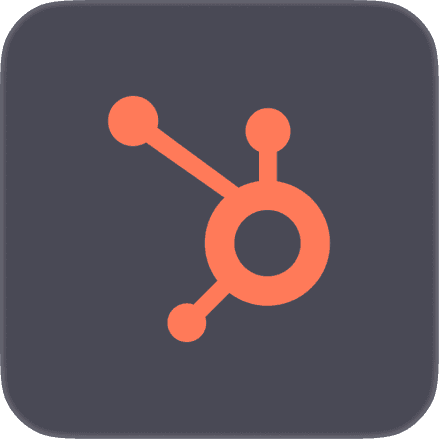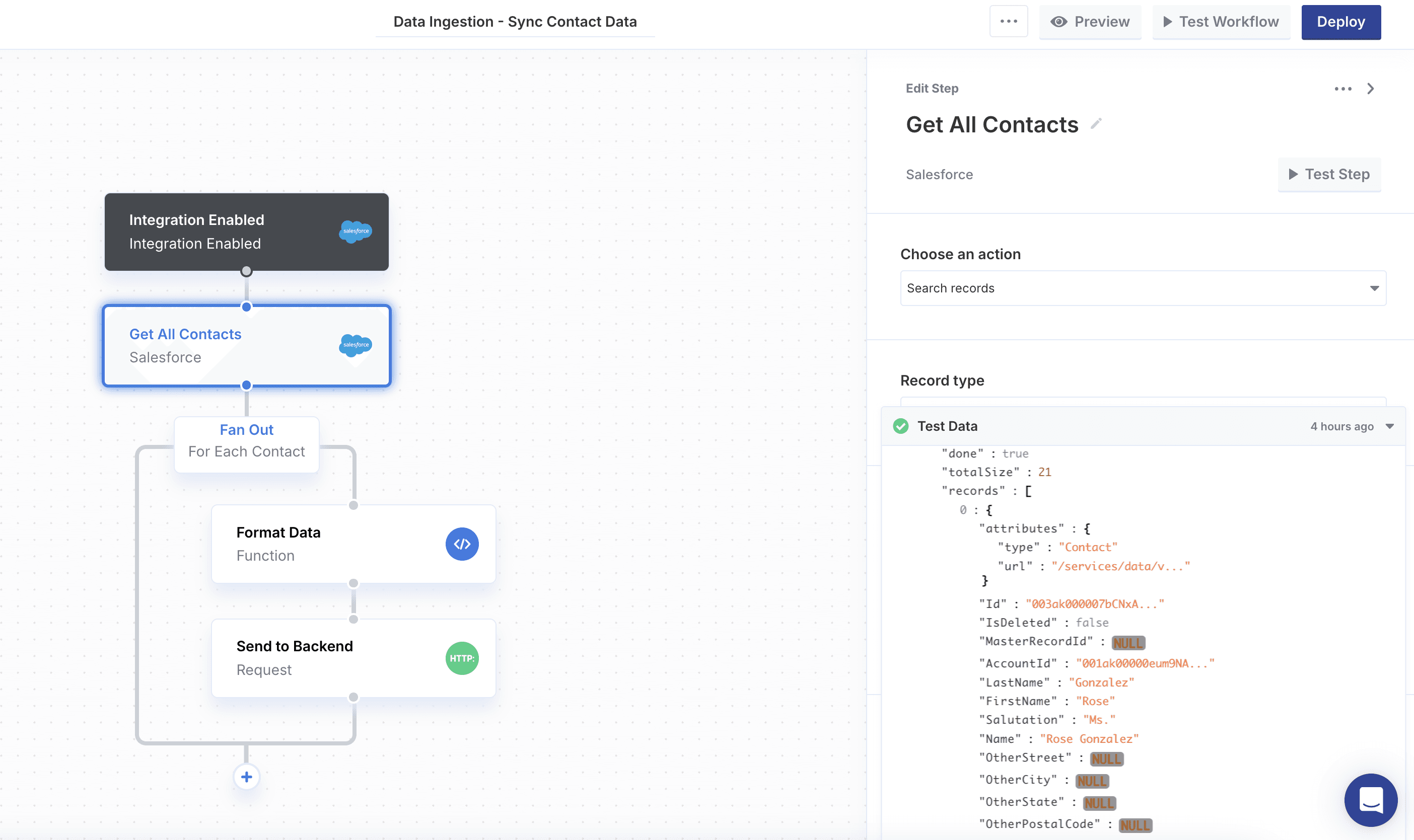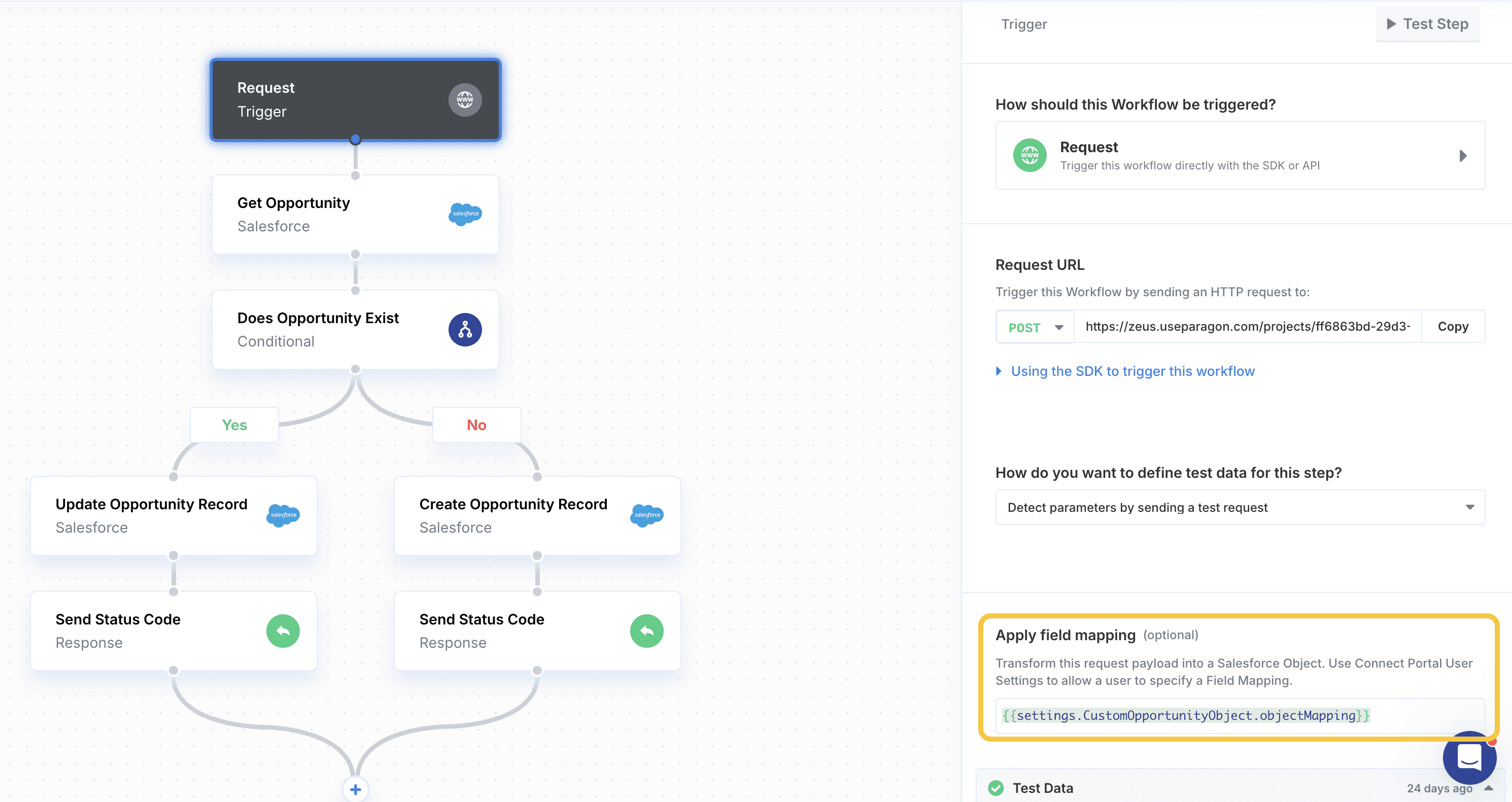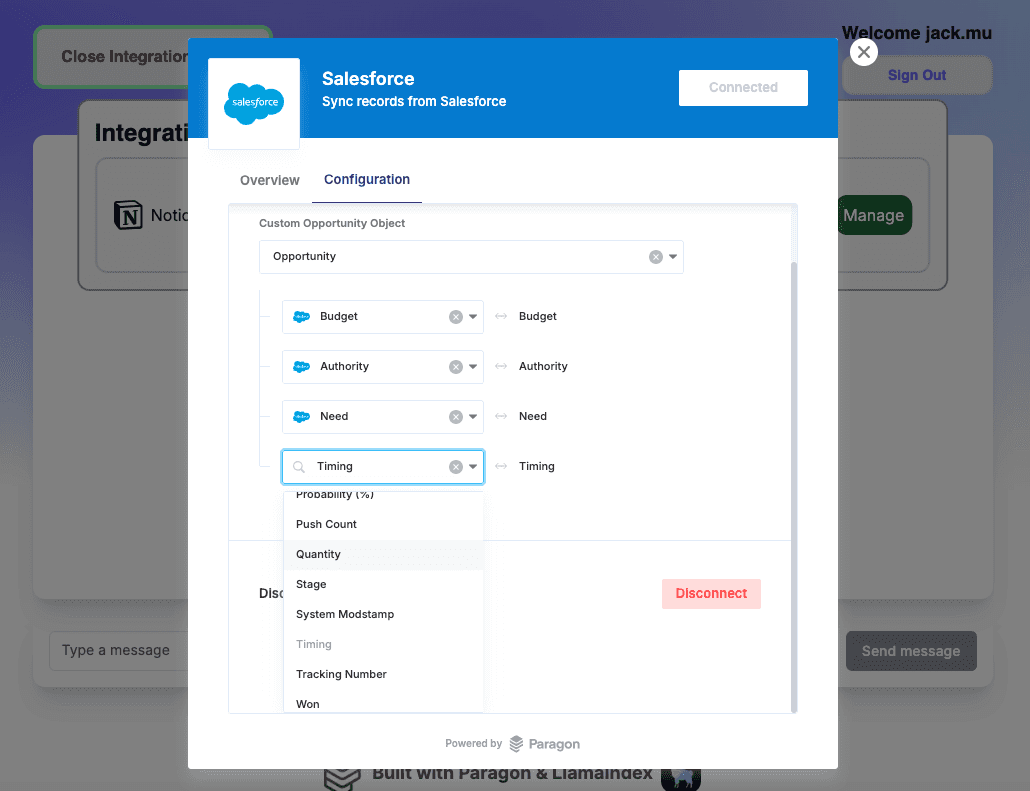Real-time Bidirectional CRM Sync
Keep your application fully synced with your customers' CRMs, and enable them to define their own field mappings even with custom objects and fields.
Popular integrations








When building sales, marketing, or CX-related SaaS applications, bi-directional CRM integrations are a must. Staying up-to-date with your users’ CRMs means push and pull functionality where your application should be able to push data to your users’ CRMs and pull their CRM data to your application.
Building a bi-directional CRM sync in Paragon is quite easy and is usually implemented with three workflows:
An initial ingestion of your users' CRM records to your application backend
A webhook or CRON-triggered workflow to send updates from their CRM (new, updated, or deleted records) to your application backend
A workflow to send updates to synced records from your application to their CRM
Additionally, these workflows can be designed in a way to support variations in how your customers want to map objects and fields between your application and their CRMs, which we cover further below.
Initial data sync
To get your application synced up with your customers’ CRM platforms, an initial data sync is needed. This can be done with a workflow that is triggered when your user authenticates and authorizes their CRM with your application, enabling the integration.

From there, we can now make sure your application is constantly in-sync with your users’ CRM platform.
Data back and forth
Receiving data to your application whenever a Hubspot record is created, updated, or deleted can be as simple as the workflow below.

The first step listens for webhook events from Hubspot; javascript function steps allows your team to transform, parse, and format data; the last step sends the data back to your application backend.
Syncing data is a two way street. Pushing records from your application to your users’ CRM can be done via Paragon’s managed Salesforce steps. Paragon handles the API details for Salesforce or Hubspot like authentication and request parameters, so your developers can focus on the data needed for the API.

Within Paragon workflows, your team can build out steps that check your users’ CRM to see if a record exists before creating a new record. Notice that Paragon also supports field mapping and custom objects, allowing your users to configure their custom CRM objects with your application’s data schema.
Configurability
It's likely each of your customers will have custom schemas in their CRMs (or even your app), via custom fields and custom objects. With field mapping, your team can enable each of your customers to define how they want data to map between your schema and their CRM schema as seen above.

This Paragon pre-built UI is native to your application, allowing users to map fields in your application with custom fields in their unique Salesforce setups.
Wrapping Up
As you can see, Paragon makes it easy to implement bi-directional sync functionality with your customers' CRMs. If you’d like to integrate with Salesforce, Hubspot, Dynamics, Pipedrive, Zoho, and every other CRM platform your customers are using, and get access to our library of CRM sync workflow templates, book a call with our team.
TABLE OF CONTENTS
Ship the CRM sync feature your users need this week
Join 150+ B2B companies that rely on Paragon as their integration infrastructure




